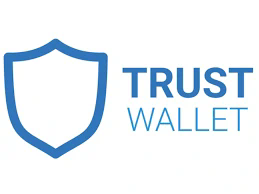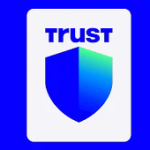The Evolution and Impact of the Most Popular NFT Marketplaces
### Introduction
In recent years, the emergence of Non-Fungible Tokens (NFTs) has drastically transformed the art, entertainment, gaming, and collectibles industries. Central to this revolution are NFT marketplaces—platforms that facilitate the buying, selling, and trading of these unique digital assets. As of October 2023, a diverse range of NFT marketplaces have gained prominence, each offering unique features, user experiences, and community dynamics. This article aims to provide a comprehensive analysis of the most popular NFT marketplaces, dissecting their structures, key functionalities, and the broader implications they hold for the digital economy.
### What are NFT Marketplaces?
NFT marketplaces are online platforms that allow users to mint, buy, sell, and trade NFTs. Unlike traditional cryptocurrencies such as Bitcoin or Ethereum, which are fungible and can be exchanged on a one-to-one basis, NFTs are unique digital assets that represent ownership of a specific item, such as digital art, music, virtual real estate, and in-game items. The transaction of NFTs occurs on blockchain networks, primarily Ethereum, which ensures the authenticity and provenance of each digital asset.
### Key Characteristics of NFT Marketplaces
1. **User Interface and Experience**: The design and intuitiveness of the platform play a critical role in attracting users. A more user-friendly marketplace tends to have a broader user base.
2. **Listing Types**: Marketplaces can support different listing types, including auctions, fixed-price listings, or offers. Understanding these options can help users choose how they want to sell or purchase NFTs.
3. **Royalty Systems**: Some platforms introduce royalties for creators, allowing them to earn a percentage from future resales, incentivizing artists and creators to use these marketplaces.
4. **Community and Social Features**: The social dynamics of NFT marketplaces can enhance user engagement. Features like follower systems, comments, and social sharing can foster community interaction.
5. **Integration with Wallets**: A seamless integration with cryptocurrency wallets is essential for a hassle-free transaction experience, as users must manage their digital assets securely.
### Overview of the Most Popular NFT Marketplaces
#### 1. OpenSea
As the world’s largest NFT marketplace, OpenSea was founded in 2017 and has since emerged as a pioneer in the NFT space. OpenSea provides a platform where users can explore various categories, including art, domain names, virtual worlds, and collectibles.
– **Key Features**:
– Intuitive user interface
– Supports multiple blockchain protocols, including Ethereum, Polygon, and Klatyn
– Users can create and list their NFTs without needing technical skills
– **Impact**: OpenSea’s user-friendly model has lowered the barriers for entry into the NFT space, allowing a diversity of creators to participate in the digital economy.
#### 2. Rarible
Rarible distinguishes itself from competitors with its decentralization model. Founded in 2020, it features a community-driven approach where users can contribute to the platform’s development through governance tokens (RARI).
– **Key Features**:
– Users can create, buy, and sell NFTs quickly
– Decentralized governance, where users vote on platform decisions
– Customizable royalty settings for creators
– **Impact**: Rarible democratizes the NFT creation process, allowing artists to gain control over their work and engage directly with their audience.
#### 3. Foundation
Foundation is an invitation-only marketplace that caters to established digital artists. The platform emphasizes quality and community, focusing on creative innovation.
– **Key Features**:
– Curated selection of artists, ensuring quality over quantity
– Encourages price discovery through auctions
– Engages a community of art enthusiasts and collectors
– **Impact**: By prioritizing established artists, Foundation maintains high standards within the NFT art community, promoting artistic integrity.
#### 4. SuperRare
SuperRare operates as a high-end NFT platform, focusing on single-edition digital artwork. Founded in 2018, it has gained a reputation for investing in quality art and artists.
– **Key Features**:
– Each artwork is verified and curated by the SuperRare team
– High-profile collaborations with established artists
– Specializes in digital art with premium pricing
– **Impact**: SuperRare elevates digital artists to the same status as traditional artists, thus legitimizing digital art as a form of collectible investment.
#### 5. Nifty Gateway
Nifty Gateway, known for its ‘drops’ of exclusive NFTs, partners with well-known artists and brands to create limited-edition releases.
– **Key Features**:
– Supports credit card payments, simplifying the buying process for newcomers
– Regular high-profile drops featuring renowned artists
– A focus on community and events surrounding the drops
– **Impact**: Nifty Gateway’s unique strategy to introduce NFTs to a more extensive audience through credit card payments contributes significantly to the NFT ecosystem’s growth.
#### 6. Zora
Zora is a marketplace and protocol designed to empower creators with unrestricted rights to their work. It operates on a bid and ask system, allowing creative ownership.
– **Key Features**:
– Supports minting NFTs at zero cost, making entry easier for creators
– Dynamic pricing models based on supply and demand
– Allows creators to earn royalties on secondary sales
– **Impact**: By putting creators first, Zora redefines how artists and collectors interact, making NFT art a sustainable source of income.
### The Role of Blockchain Technology
The efficiency and reliability of NFT marketplaces owe much to the underlying blockchain technology. Most commonly built on Ethereum, blockchain facilitates:
1. **Provenance Tracking**: Each NFT is recorded on the blockchain, making it easy to trace the history and ownership of the asset.
2. **Smart Contracts**: These automated contracts facilitate transactions without the need for intermediaries, ensuring transparency.
3. **Security**: The decentralized nature of blockchain provides security and resilience against hacking or fraud attempts.
### Legal and Regulatory Considerations
As NFT marketplaces grow, they also face scrutiny regarding intellectual property rights, copyright issues, and regulatory compliance. Artists may face challenges over plagiarism and unauthorized minting of their work on various platforms. Striking a balance between fostering innovation and protecting creators’ rights remains a significant hurdle.
### The Economic Impact of NFT Marketplaces
NFT marketplaces have not only revolutionized the art and collectibles sectors but have also had broader economic implications:
1. **New Revenue Streams**: Artists are now able to monetize their work directly, often selling art for prices inaccessible through traditional channels.
2. **Investment Opportunities**: Collectors view NFTs as digital assets, leading to increased trading and speculative investment, thus influencing market dynamics.
3. **Empowerment of Creators**: Creators have greater control over their intellectual property, fostering a more equitable digital economy.
### Challenges and Future Outlook
Despite their rapid growth, NFT marketplaces face several challenges:
1. **Market Saturation**: The proliferation of marketplaces could lead to a diluted value for both creators and collectors.
2. **Environmental Concerns**: The energy consumption associated with blockchain transactions, particularly on Ethereum, raises concerns about environmental sustainability.
3. **Regulatory Hurdles**: As governments around the world begin to regulate cryptocurrencies and digital assets, NFT marketplaces must navigate complex legal landscapes.
Nonetheless, with ongoing advancements in technology and growing acceptance of NFTs in various sectors, the future of NFT marketplaces looks promising. Innovations like layer-2 solutions intend to address current limitations, including gas fees and transaction speed, paving the way for a more sustainable ecosystem.
### Conclusion

As NFT marketplaces continue to evolve, they stand as powerful agents for change within the digital economy. These platforms have democratized the art world, reshaped ownership concepts, and embraced the principles of decentralization. While challenges abound, the trajectory of NFT marketplaces suggests a rich future in which creators, collectors, and communities thrive. The current landscape reflects a dynamic fusion of art, technology, and finance—elements that will continue to define the next chapter in the saga of digital assets and ownership.

